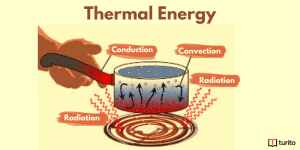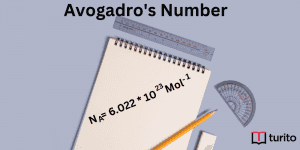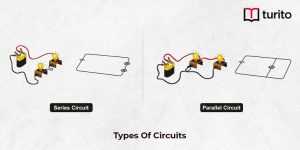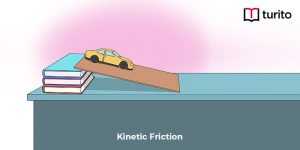In your daily life, you use many electronic appliances. Maximum appliances used at home consist of an electric component known as a resistor. These resistors are mostly used in heaters, light bulbs, microwaves, electric stoves, toasters, and other heating appliances. In an electronic circuit, the flow of the current or limits of current is done by a resistor. To provide a particular voltage range for an active device, resistors are used as transistors.
Types of Resistors
Resistors are classified into two types. These types of resistors are further divided into subcategories. The types of resistors are as follows:
-
Linear Resistor
The current in the linear resistor will be directly proportional to the voltage applied to the resistor. The resultant graph of the linear resistor will be between the current (I) and voltage (V). The linear resistor graph will have a straight I-V curve.
Linear resistors are further divided into two types:
-
Fixed Resistors
Fixed resistors have specific values, and these specific values cannot be changed. These fixed resistors are used for the appliance which never needs to change their value.
-
Variable Resistors
Variable resistors have values that can be varied or changed, and these variable values can be changed using a dial, screw, button, or knob. These variable resistors are used for appliances like radios with knobs, lights with switches, and television.
-
Non-Linear Resistor
The current in the non-linear resistor will be indirectly proportional to the voltage applied to the resistor. Current In the resistor changes with the exchange in the temperature or voltage exchange. Values of non-linear resistors aren’t changed according to Ohm’s law. The resultant graph of the non-linear resistor will be between the current (I) and voltage (V). The non-linear resistor graph will have a non-linear I-V curve.
Non-linear resistors are further divided into three types:
-
Thermistors
Thermistors resistors are a kind of variable resistors. Thermistors identify the temperature change. These thermistor resistors have two terminals, and it is sensitive to temperature. The resistance value of the thermistor resistor is inversely proportional to the temperature.
-
Varistors
A non-linear varistor resistor is made of semiconductors. The current through the varistor depends non-linearly on the voltage applied across the resistor. The most commonly used form for the varistor resistor is MOV or metal oxide varistor.
-
Photo Resistors
Photo resistors are also called LDR (light-dependent resistors). The other names of the photo resistors are photoconductive cells and light-controlled variable resistors. The photoresistor’s resistance decreases with an increase in the intensity of the incident light. So, the photoresistor’s resistance is inversely proportional to the intensity of the incident light.
Types of Resistors Fixed and Variable:
The fixed and variable resistors are types of resistors called linear resistors. These fixed and variable resistors are further classified into sub-categories.
There are seven types of resistor, including the fixed resistor, which are as follows:
-
Wire Wound Resistor
A form of a passive component is called a wire-wound resistor. A wire wound resistor is created by wrapping metal wire around a metal core. The metal wire serves as the electric current’s resistive component. Thus, the metal wire restricts a specific level of electric current. As a non-conductive substance, the metal core is placed. As a result, it blocks the flow of electric current.
-
Foil Resistor
The most precise and reliable parts to employ to limit the flow of electric current to a specific level are foil resistors. Compared to other types of resistors, foil resistors generate little noise. The TCR (Temperature Coefficient of Resistance) of foil resistors is low.
-
Carbon Composition Resistor
A passive component that limits the flow of electric current to a set level is a resistor made of carbon called a carbon composition resistor. The cylindrical resistive element used to create the carbon composition resistors has integrated metal end caps. The ceramic and carbon powder combination is used to create the cylindrical resistive element of the carbon composition resistor. The carbon powder effectively conducts electric current.
-
Carbon Film Resistor
The carbon film resistor is the most common type of resistor used in electrical circuits. The carbon film is applied to a ceramic substrate to create the carbon film resistors. The ceramic substrate serves as an electrical current insulator, while the carbon sheet functions as a resistive element to the current.
-
Metal Film Resistor
A form of a passive component known as a metal film resistor uses metal film to limit the flow of electric current to a specific level. In contrast to metal film resistors, which use chromium, nickel, tin, and antimony to create their films, carbon is used to create the film in carbon film resistors. The TCR (temperature coefficient of resistance) of metal film resistors is low.
-
Metal Glaze Resistor
The metal glaze resistor is a passive component used to limit the flow of electric current to a certain level by combining glass powder with metal particles. Low TCR (temperature coefficient of resistance) for metal glaze resistors.
-
Metal Oxide Film Resistor
A form of a passive component known as a metal oxide film resistor uses metal oxide film as the resistive element to limit the flow of electric current to a specific level. Metal oxide film resistor construction is virtually identical to metal film resistors.
There are seven types of the resistor of variable resistor, which are as follows:
-
Potentiometer
Three terminals make up the potentiometer, two fixed and one movable. The track’s two resistive ends are linked to the potentiometer’s two fixed terminals, while the third terminal is connected to the slider or sliding wiper. The current flow in the potentiometer decreases when the resistance of the potentiometer is increased.
-
Humistor
Humistor name is the combination of humidity and resistor. Humidity affects humistors quite strongly. Resistive humidity sensors and humidity-sensitive resistors are other names for humidistats.
-
Rheostat
Rheostats are built in a manner that is virtually identical to potentiometers. However, we utilize two terminals of a rheostat to act. The length of the resistive element or track through which the electric current flows determines the rheostat’s resistance.
-
Thermistor
Resistance of Thermistors depends on the surrounding temperature change. Positive temperature coefficient (PTC) and negative temperature coefficient (NTC) thermistors are the two types of thermometers. While PTC thermistors experience an increase in resistance as the temperature rises, NTC thermistors experience a reduction in resistance as the temperature rises.
-
Magneto Resistor
The resistance of the magneto resistor varies when a magnetic field is supplied to the magneto resistor. Similarly, the magneto resistor’s resistance dropped as the magnetic field’s strength increased.
-
Photoresistor
The word photoresistor is the combination of the terms photon and resistor. The photoresistor experiences a change in resistance when light energy is applied. As the applied light intensity rises, the photo resistor’s resistance falls.
-
Force Sensitive Resistor
As the name indicates, the force-sensitive resistors are extremely sensitive to the applied force. Force sensors, pressure sensors, force-sensing resistors, or FSR are other names for force-sensitive resistors.
Things to Consider When Using Various Types of Resistors
Power dissipation and temperature coefficients are the two factors to be mindful of when using a type of resistor.
Power Dissipation: Power dissipation is an important consideration when selecting a resistor. Always select a resistor with a lower power rating than the current being passed through it. So, choose a resistor with a power rating at least twice as high.
Temperature Coefficients: The most important thing to remember when working with resistors is that they must be used at high temperatures or else the resistance will flow dramatically. The temperature coefficient of a resistor is classified as either negative or positive (PTC).
Color Code of Resistors
The value of the resistor isn’t displayed outside. Through the color pattern, the resistance of the resistor can be calculated. The (PTH) plated-through-hole resistors use the color coding system; these colors add flair to the circuit when connected. In the case of (SMD) surface mount device resistors, they have their value marking system.
The color codes of the resistors are as follows:
| Color | Color code |
| Black | 0 |
| Brown | 1 |
| Red | 2 |
| Orange | 3 |
| Yellow | 4 |
| Green | 5 |
| Blue | 6 |
| Violet | 7 |
| Gray | 8 |
| White | 9 |
Tolerance of Resistors
The value of the resistor of the deviation from the nominal value is known as the tolerance of resistors. This value is expressed with the ±% symbol. The resistor’s tolerance is used to identify the resistor, giving a more accurate resistance reading.
Tolerance of the resistor according to the color:
| Color | Tolerance |
| Brown | ±1% |
| Red | ±2 % |
| Gold | ±5% |
| Silver | ±10% |
Applications of Resistor
Wire applications wrapped resistors kind of include shunt with ampere meters which essentially used for accurate measurement, high sensitivity very balanced current regulation in a generally major way.
Photo resistors are used in various products, including photography equipment, burglar alarms, and flame detectors in a pretty big way.
Voltmeter and temperature control generally is controlled by resistors, contrary to popular belief.
Amplifiers, telephony, oscillators, and digital multimeters all need resistors, which is particularly significant. They are also utilized in transmitters, demodulators, and modulators, which are particularly fairly significant.
Conclusion
Resistors are part of appliances used in daily life. These resistors are used in circuits. Practical work with resistors will help to know the usage and working of the resistor in the circuit. In physics, resistors are to know the behavior of different resistors, i.e., the flow of the current, voltage flow, etc.
There are many different types of resistors. Each type of resistor is used in different circuits according to their behavior. To know which type of resistor should be used in the circuit, the color of the type of resistor table should be referred to.
Frequently Asked Questions
1. What are the different types of resistors?
A. There are many types of resistors. The main classification of resistors is two types that are linear and nonlinear. These are further divided into subcategories. The linear resistors are divided into fixed and variable resistors. The nonlinear resistors are divided into a thermistor, photoresistor, varistor, and surface mount resistor.
2. Which type of resistor is used in chargers?
A. Flameproof wire wound resistors are used in the chargers as chargers are the input devices. The limited current should supply from the charger as a wire wound resistor is created by wrapping metal wire around a metal core. The metal wire serves as the electric current’s resistive component. Thus, the metal wire restricts a specific level of electric current. As a non-conductive substance, the metal core is placed. As a result, it blocks the flow of electric current. So the chargers will be working without any high voltages.
3. What type of resistor is a bulb?
Ans. The type of resistor used in a bulb is tungsten. The filament in the bulb doesn’t have a specific resistance level, so when the voltage through the bulb has increased, the current is also increased. The increase in current results in the temperature of the bulb. As a result, the bulb glows.

Relevant Articles
Understanding Thermal Energy: What It Is and How It Works
Thermal energy is essential to our daily lives, from warming …
Understanding Thermal Energy: What It Is and How It Works Read More »
Read More >>Avogadro’s Number: Meaning, Importance, and More
Introduction The concept of measuring the microscopic particles that make …
Avogadro’s Number: Meaning, Importance, and More Read More »
Read More >>Kinetic Friction – Definition, Laws, Types
Kinetic Friction Kinetic force is a force acting between two …
Kinetic Friction – Definition, Laws, Types Read More »
Read More >>




















Comments: